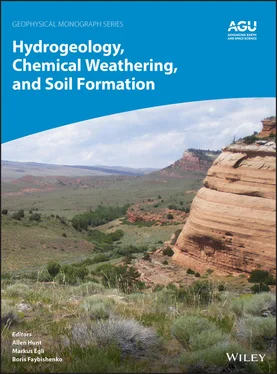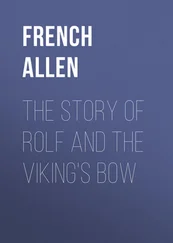15 Brevik, E. C., & Cerdà, A. (2016). History of soil science. In R. Lal (Ed.), Encyclopedia of soil science, 3rd ed. (pp. 1093–1097). Boca Raton, Florida: CRC Press.
16 Brevik, E. C., & Hartemink, A. E. (2010). Early soil knowledge and the birth and development of soil science. Catena, 83, 23–33.
17 Brillante, L., Mathieu, O., Lévêque, J., van Leeuwenc, C., & Boisa, B. (2017). Water status and must composition in grapevine cv. Chardonnay with different soils and topography and a mini meta‐analysis of the δ13C/water potentials correlation. Journal of the Science of Food and Agriculture, 98, 691–697.
18 Brown, D. J. (2006). A historical perspective on soil–landscape modeling. In S. Grunwald (Ed.), Environmental soil–landscape modeling: Geographic information technologies and pedometrics (pp. 61–103). Boca Raton, Florida: CRC Press.
19 Brown, D. J., Clayton, M. K., & McSweeney, K. (2004). Potential terrain controls on soil color, texture contrast and grain‐size deposition for the original catena landscape in Uganda. Catena, 122, 51–72.
20 Büdel, J. (1982). Climatic geomorphology, transl. by L. Fischer & D. Busche. Princeton, NJ: Princeton University Press.
21 Buol, S. W., Hole, F. D., and McCracken, R. J. (1980). Soil Genesis and Classification, 2nd ed. Ames: Iowa State University Press.
22 Bushnell, T. M. (1942). Some aspects of the soil catena concept. Soil Science Society of America Proceedings, 7, 466–476.
23 Bushnell, T. M. (1946). The catena cauldron. Soil Science Society of America Proceedings, 10, 335–340.
24 Chadwick, O. A., & Chorover, J. (2001). The chemistry of pedogenic thresholds. Geoderma, 100, 321–353.
25 Chorover, J., Kretzschmar, R., Garcia‐Pichel, F., and Sparks, D. L. (2007). Soil biogeochemical processes within the Critical Zone. Elements, 3, 321–326.
26 Cole, L. C. (1958). The ecosphere. Scientific American, 198, 83–96.
27 Conacher, A. J., & Dalrymple, J. B. (1977). The nine‐unit land‐surface model: An approach to pedogeomorphic research. Geoderma, 18, 1–154.
28 Darwin, C. R. (1881). The formation of vegetable mould through the action of worms, with observations on their habits. London: John Murray.
29 Dokuchaev, V. V. (1880). Protocol of the meeting of the branch of geology and mineralogy of the St. Petersburg Society of Naturalists. [Translated by the Department of Soils and Plant Nutrition, University of California, Berkeley and cited by Amundson & Jenny (1997)]. Transactions of the St. Petersburg Society of Naturalists, XII, 65–97.
30 Dokuchaev, V. V. (1883). Russian Chernozem: Selected Works of V. V. Dokuchaev, vol. 1. Jerusalem: Israel Program for Scientific Translations (translated in 1967).
31 Dokuchaev, V. V. (1899). Report to the Transcaucasian Statistical Committee on Land Evaluation in General and Especially for the Transcaucasia. Horizontal and Vertical Soil Zones (Tipogr. kantselyarii Glavnonachal’stvuyush‐chego grazhdanskoi chast’yu na Kavkaze, Tiflis, 1899) [in Russian].
32 Effland, A. B. W., & Effland, W. R. (1992). Soil geomorphology studies in the U.S. Soil Survey Program. Agricultural History, 66, 189–212.
33 Fallou, F. A. (1862). Pedologie; oder allgemeine und besondere Bodenkunde. Dresden: Schönfeld Buchhandlung.
34 Finke, P. A., & Hutson, J. L. (2008). Modelling soil genesis in calcareous loess. Geoderma, 145, 462–479.
35 Fissore, C., Dalzell, B. J., Berhe, A. A., Voegtle, M., Evans, M, & Wu, A. (2017). Influence of topography on soil organic carbon dynamics in a Southern California grassland. Catena, 149, 140–149.
36 Fleming, P. A., Anderson, H., Prendergast, A. S., Bretz, M. R., Valentine, L. E., & Hardy, G. E. S. (2014). Is the loss of Australian digging mammals contributing to a deterioration in ecosystem function? Mammal Review, 44, 94–108.
37 Florinski, I. V. (2011). The soil formation equation: Imaginary priority of Hans Jenny. Pedometron, 30, 1–3.
38 Florinski, I. V. (2012). The Dokuchaev hypothesis as a basis for predictive digital soil mapping (on the 125th anniversary of its publication). Eurasian Soil Science, 45, 445–451.
39 Gabet, E. J., Perron, J. T., & Johnson, D. L. (2014). Biotic origin for Mima mounds supported by numerical modeling. Geomorphology, 206, 58–66.
40 Gennadiyev, A. N., & Bockheim, J. G. (2006). Development of the soil cover pattern and soil catena concepts. In B. P. Warketin (Ed.), Footprints in the soil: People and ideas in soil history (pp. 167–186). Amsterdam and Oxford: Elsevier.
41 Gillard, A. (1969). On terminology of biosphere and ecosphere. Nature, 223, 500–501.
42 Glazovskaya, M. A. (1963). On geochemical principles of the classification of natural landscapes. International Geology Review, 5, 1403–1431.
43 Glazovskaya, M. A. (1968). Geochemical landscapes and geochemical soil sequences. Transactions of the Ninth International Congress of Soil Science, Adelaide, 4, 303–312.
44 Grealish, G. J., & Fitzpatrick, R. W. (2014). Assisting nonsoil specialists to identify soil types for land management: An approach using a soil identification key and toposequence models. Soil Use and Management, 30, 251–262.
45 Grunwald, S. (2006). What do we really know about the space–time continuum of soil–landscapes? In S. Grunwald (Ed.), Environmental soil–landscape modeling: Geographic information technologies and pedometrics (pp. 3–36). Boca Raton, Florida: CRC Press.
46 Hallsworth, E. G. (1965). The relationship between experimental pedology and soil classification. In E. G. Hallsworth & D. V. Crawford (Eds.), Experimental Pedology (pp. 354–374). London: Butterworths.
47 Hartemink, A. E. (2016). The definition of soil since the early 1800s. Advances in Agronomy, 137, 73–126.
48 Heimsath, A. M., Dietrich, W. E., Nishiizumi, K., & Finkel, R. C. (1997). The soil production function and landscape equilibrium. Nature, 388, 358–361.
49 Hilgard, E. W. (1860). Report on the geology and agriculture of Mississippi. Jackson, MS: E. Barksdale, State Printer.
50 Hole, F. D. (1961). A classification of pedoturbation and some other processes and factors of soil formation in relation to isotropism and anisotropism. Soil Science, 91, 375–377.
51 Holliday, V. T., 2006. A history of soil geomorphology in the United States. In B. P. Warkentin (Ed.), Footprints in the soil: People and ideas in soil history (pp. 187–254). Amsterdam: Elsevier Press.
52 Hoosbeek, M. R., & Bryant, R. B. (1992). Towards the quantitative modeling of pedogenesis: A review. Geoderma, 55, 183–210.
53 Huggett, R. J. (1973). Soil landscape systems: Theory and field evidence. (Ph.D. thesis). University of London.
54 Huggett, R. J. (1975). Soil landscape systems: A model of soil genesis. Geoderma, 13, 1–22.
55 Huggett, R. J. (1976). Lateral translocation of soil plasma through a small valley basin in the Northaw Great Wood, Hertfordshire. Earth Surface Processes, 1, 99–109.
56 Huggett, R. J. (1991). Climate, Earth processes and Earth history. Heidelberg: Springer.
57 Huggett, R. J. (1995). Geoecology: An evolutionary approach. London: Routledge.
58 Huggett, R. J. (1997). Environmental change: The evolving ecosphere. London: Routledge.
59 Huggett, R. J. (1998). Soil chronosequences, soil development, and soil evolution: A critical review. Catena, 32, 155–172.
60 Huggett, R. J. (1999). Ecosphere, biosphere, or Gaia? What to call the global ecosystem. Global Ecology and Biogeography, 8, 425–431.
61 Huggett, R. J. (2017). Fundamentals of geomorphology, 4th ed. Abingdon: Routledge.
62 Huggett, R. J., & Cheesman, J. E. (2002). Topography and the environment. Harlow, Essex: Prentice Hall.
63 Iticha, B., & Takele, A. (2018). Soil–landscape variability: Mapping and building detail information for soil management. Soil Use and Management, 34, 111–123.
Читать дальше












